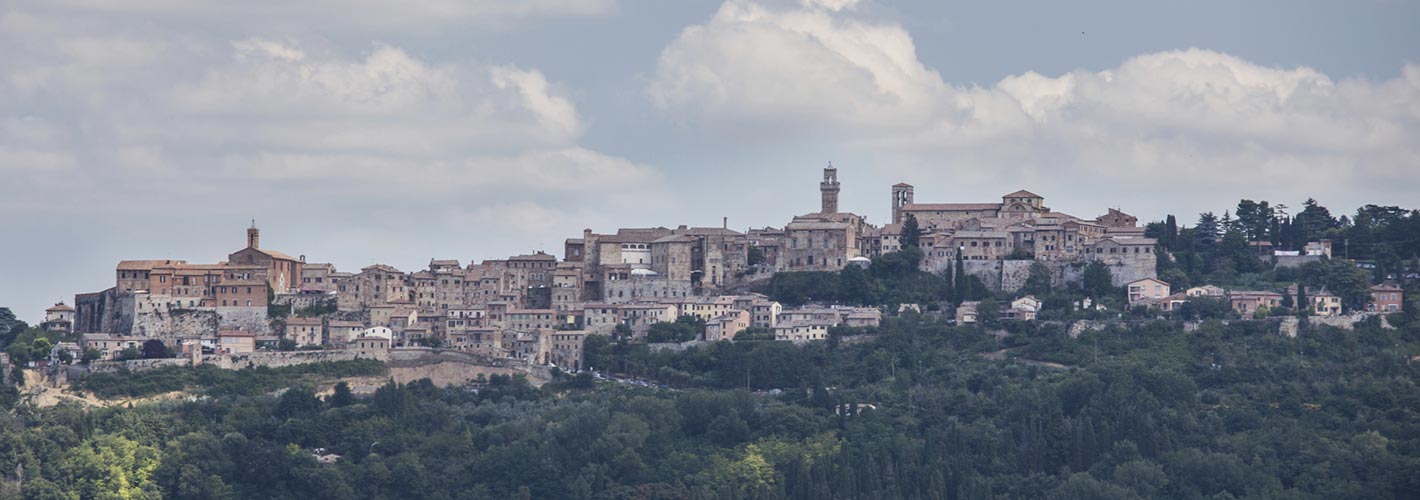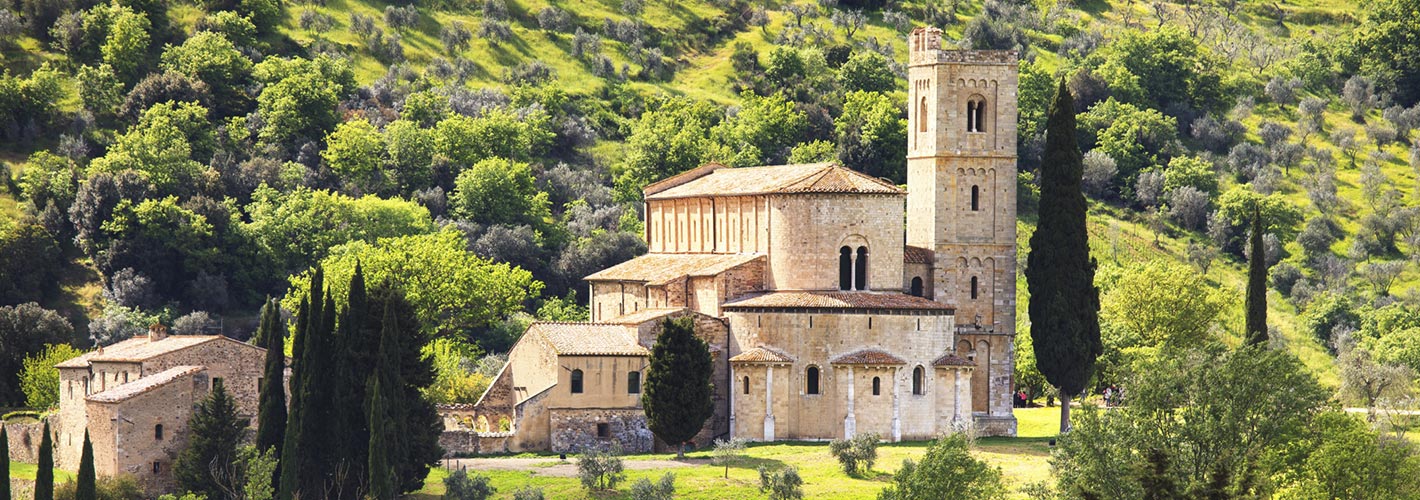For those travelling up from the valley floor, the imposing fourteenth century fortress immediately reveals the layout of Montalcino, a medieval town with a defensive military structure, furrowed by steep, narrow streets. From up here, the landscapes are veritable works of art just like those kept in the Museo Civico Diocesano d’Arte Sacra, which houses one of the most precious collections of Sienese painting and wood sculpture. Among the many churches the S.Agostino, the neoclassical cathedral, the Sanctuary of the Madonna del Soccorso and S. Egidio, the "de senesi" church stand out. The Town Hall (late thirteenth century), a slender but robust structure flanked by a high steeple, almost a watchtower topped off by the "Big Bell" that still marks time for the townspeople. 9km from the center of Montalcino heading towards Castelnuovo dell’Abate arises the solitary Abbey of S. Antimo, whose monumental temple (twelfth century) is one of the finest examples of the Romanesque-French style in Italy. The Montalcino district, so inviting for lovers of hiking and culinary pleasures, and featuring thick forests interspersed with traditional vineyards and olive trees, opens up where sight and thought are inevitably lost in the Val d'Orcia landscape. As proof of this, the Montalcino territory, with the Val d'Orcia, was awarded World Heritage Site status in 2004. In a strategic position between the Maremme area and valleys of the interior, with its churches, palaces and fortifications and works of art, it has also marked many crucial moments in the story of medieval and modern Tuscany alike. And even the "Poggio della Civitella" with an Etruscan settlement dating back to the fourth century BC, confirms the importance of both the site and those who once trod its soil. Established within the domain of the extremely powerful Abbey of St. Antimo the "castle" of Montalcino was soon fought over by the counts of Siena and Florence. Under Pius II it became a Diocese and then a Town in 1462. Later, an impregnable Siena fortress, it yielded only to the Treaty of Cateau-Cambresis under which Siena was annexed to the Medici Grand Duchy (1559). Lastly, the famous "Festival of the Thrush" deserves a mention; it takes place on the last Sunday of October and allows guests to experience local culture through the re-enactment of ancient traditions.

